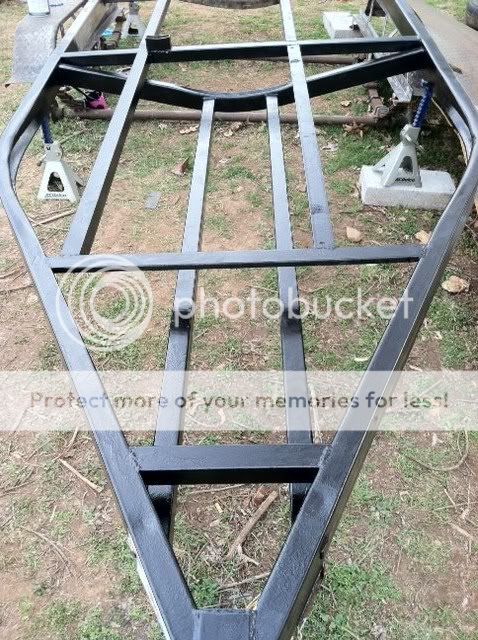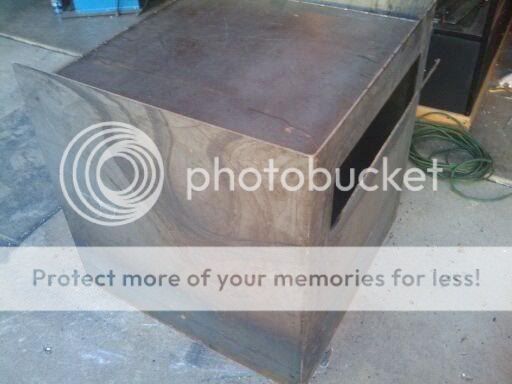ThatsWhatSheSaidBBQ
is one Smokin' Farker
Today was one of those days when you wanted to get a lot more done than you actually did.. Don't get me wrong; we made some progress, but the elements didn't help (if only we lived in Jamaica!).. Anyways, I didn't want to leave you guys with absolutely NOTHING, so I took a few pics of what little we did get done.
We cut the tongue down to size...it was just way too long. We took approximately 3ft off so the overall length is at about 18ft now.

De-greased the frame and hit it with some POR15...The wind was ferocious so we paused on that temporarily.

Got the inner box welded on all sides. The end that will be attached to the cooking chamber is face-down on the ground. As you can see, there isn't a 2in gap there like the rest of the box...saved about 40ish dollars and that side of the box honestly doesn't need to be double insulated. We'll add a small section of angle iron at the corners (on the sides) for extra support and to keep the walls spread so we can fit the other piece on with ease :-D.

This is another shot of the firebox just so you can get a feel for its over all size. If we wanted to, we could actually ball ourselves up inside (not at the same time of course).

This is a shot for those who are concerned about the stability of the project :boxing:...just a sample of the weld..the good seams were on the bottom, but the arc welder is providing excellent penetration. The breaker switch would flip every 3-4 inches so there was a lot of stoppin' and goin'.

We cut the tongue down to size...it was just way too long. We took approximately 3ft off so the overall length is at about 18ft now.

De-greased the frame and hit it with some POR15...The wind was ferocious so we paused on that temporarily.

Got the inner box welded on all sides. The end that will be attached to the cooking chamber is face-down on the ground. As you can see, there isn't a 2in gap there like the rest of the box...saved about 40ish dollars and that side of the box honestly doesn't need to be double insulated. We'll add a small section of angle iron at the corners (on the sides) for extra support and to keep the walls spread so we can fit the other piece on with ease :-D.

This is another shot of the firebox just so you can get a feel for its over all size. If we wanted to, we could actually ball ourselves up inside (not at the same time of course).

This is a shot for those who are concerned about the stability of the project :boxing:...just a sample of the weld..the good seams were on the bottom, but the arc welder is providing excellent penetration. The breaker switch would flip every 3-4 inches so there was a lot of stoppin' and goin'.




